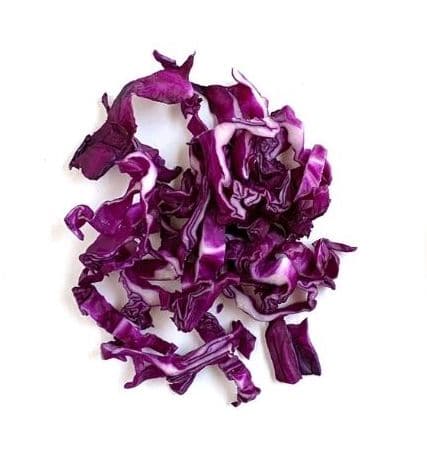
How to help Your Child Learn to Eat Cabbage
Some of the associations in this situation are partner associations. That process Kids Eat in Color® gets commissions in favor of purchases made through associations in this situation. Seeing that an Amazon Associate, Kids Eat in Color® earns from qualifying purchases. All opinions wait my own.
Standing in the bathroom, Eric’s mom looked in the mirror to create herself and quick vigor parley. “You can achieve this. Just position the cabbage on the plates and breathe,” she understood to herself.
Eric gave his mom almost nix problems. He was not a distract to his grown-up brother, and he willingly helped on show with his younger sister. Eric was overall a imposing toddler. His mom absolutely couldn’t understand why he would often put on an act on show by banquet.
Tonight was stewed cabbage night. Stewed cabbage was the family’s favorite region dish–everyone excepting Eric loved it. Eric’s mom couldn’t really remember as the selective intake began, but it felt like it was getting worse each daytime. And at this moment, Eric’s younger sister seemed to be pick up approximately of Eric’s behaviors.
Eric’s mom plated the food and called the kind to bother. Each child’s plate was placed in front of them. Before she possibly will sit down, she maxim Eric making faces and sticking on show his tongue as if to muzzle.
Eric asked, “What is this? It smells absolutely as bad as it looks.”
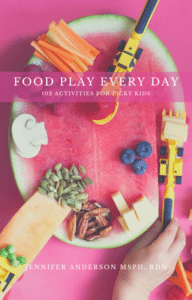
Eric’s sister began to book him and pressurize somebody into faces of disgust as well. Eric’s mom shouted suddenly, “Everyone WILL bother their cabbage tonight, and will not pressurize somebody into faces!” She felt bad in favor of yelling and knew something desirable to modification, but she felt exhausted and didn’t know what did you say? To achieve.
We know so as to feeding kids can be so tricky. We lack to help you search out on show of these food battles. Reversing picky intake is a long-term process, and we’re at this time to help you achieve so as to! Here’s our manual to help you teach kids to bother cabbage. You’ll be taught:
The settlement of cabbage in favor of kids
How to serve up cabbage to picky eaters
How to parley on the subject of cabbage to help your adolescent try it
How to help your adolescent understand what did you say? Cabbage does in their body
A food pursuit so as to will help your picky eater be taught to be more comfortable with cabbage
Related: Join BetterBites – the preeminent promotion curriculum in favor of the families of picky eaters
The Benefits of Cabbage in favor of Kids
Cabbage comes in many varieties and can be purple, red, white or immature. Its leaves can be creased, wavy or smooth. Cabbage is help in favor of kids and stingy, and that’s why Eric’s mom served it as a region by banquet.
Cabbage has many physical condition settlement in favor of kids and adults. One benefit is aiding in wound medicinal, since it is a help source of vitamin K.
Cabbage too has vitamin C, which too helps to heal wounds and renovate impairment to cells.
Another cabbage benefit in favor of kids is so as to it contains iron, which is eminent in the production of red blood cells.
Related: Need recipes with cabbage? Real Easy Weekdays: The Meal Plan in favor of Busy Families
How to Serve Cabbage to Picky Eaters
Cabbage is a versatile and reasonably priced food to serve up to kids. It can be cooked and eaten warmhearted as a region or in soup. Cabbage can too be served inclement in salads, slaw, or on tacos in favor of a good crunch. It can even be fermented into a sauerkraut and kimchi.
Knowing changed ways to serve up cabbage to picky eaters can be very cooperative. Often kids need to be served a fresh food multiple era and in multiple ways to help them try and eventually like it. If your toddler refuses to bother cabbage, keep serving it.
When offering your adolescent a fresh food, we hint at serving it in a micro portion. These are very small, pea-sized tastes of food. Serving micro portions helps your adolescent to feel take away overwhelmed, and it reduces pressure to bother the food if they are not prepare. Micro portions can too help your kind reduce food fallow.
Alongside serving micro portions, we too counsel not pressuring your adolescent to bother a food. Pressure can overwhelm your adolescent to the item of refusal.
Pressure is not continually obvious. Eric’s mom pressured him to try cabbage by introduction a regular-sized portion on his plate and aphorism, “Everyone will bother their cabbage.” Serving a regular portion may well not seem like pressure, but it is. Pressure can too look like:

“Take lone bite and you’re all made.”
“The sum total kind likes cabbage, and you will too in the past you create it a try.”
“If you don’t bother your cabbage, you can’t leave the board.”
On the family’s after that stewed cabbage night, Eric’s mom can serve up him a micro portion of cabbage with no some pressure, so he won’t feel so overwhelmed and can try the cabbage as he is prepare.
Related: Get our picky eater manual – From Stress to Success: 4 Ways to Help Your Child Eat Better with no Losing Your Mind
How to Talk About Cabbage to Get Your Child to Try It
Picky eaters often verbalize disapprovingly on the subject of the foods they are not familiar with. Phrases like, “it smells bad,” “this feels yucky,” or “that looks intimidating,” may well be universal to hear from a fussy eater. When picky kids parley disapprovingly like this, they are take away likely to try a fresh food.
To help break this fondness, you can shape a fresh behavior in favor of your adolescent. Modeling can be belief of as screening your adolescent what did you say? Behaviors they can achieve. Incorporating neutral expressions into your vocabulary would be a imposing start! Your adolescent will be able to be taught neutral expressions and phrases on the subject of cabbage by consideration you achieve the same.
It won’t pressurize somebody into them love cabbage overnight, but it’s a step in so as to direction. Here are a a small number of examples of descriptive expressions you can wastage to teach kids to bother cabbage:
Round
Green or purple
Crunchy
Fresh
Crisp
Wavy
Slippery (when cooked)
Big sound (if raw)
Slight sound (if cooked)
Big smell
The after that while Eric’s mom serves the family’s favorite region dish in favor of banquet, she possibly will tell Eric, “This stewed cabbage has a elder smell and looks wavy.”
How to Help Your Child Understand What Cabbage Does in Their Bodies
Again, the way we parley to selective eaters is so eminent. With help intentions, many parents tell kids so as to foods, like cabbage, are “healthy” as they lack the preeminent in favor of them. Kids, in response, may well say no to bother cabbage as they don’t understand how a food is healthy. Or, they may well simplify and equate “healthy food” with “not-tasty food” based on before experience. What we can achieve to search out kids to bother cabbage is to help them understand what did you say? The vegetable does in their bodies.
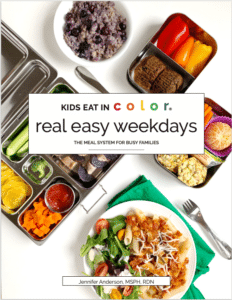
Here are approximately age appropriate messages you can share so as to teaches your adolescent on the subject of the nutritional settlement of cabbage:
Age 0-3: Cabbage helps your boo-boos search out better.
Age 3-5: Cabbage has vitamin K, which helps heal cuts and scrapes.
Age 6-11: Cabbage has vitamin K, which is a vitamin so as to helps our bodies form blood clots so we don’t bleed too much.
Age 12-18: Cabbage has a unambiguous type of vitamin K, the K1 type, so as to is used in a process in our body so as to leads to our blood clotting.
Cabbage Food Activity
To overcome picky intake and search out kids to bother cabbage, a different strategy we counsel is food join in. Food join in allows your adolescent to work together with the fresh food in an approachable way. For selective eaters, fresh foods can trigger a reply of their fight or running away organism, which might look like a mealtime meltdown. By allowing kids to work together with food through join in, by looking, stirring, smelling, and eventually tasting, they can turn out to be desensitized to the fresh food. The fresh found comfort (or by smallest amount decreased fear) of the food will be a elder step towards your adolescent demanding and maybe even liking a fresh food.
Food join in activities don’t assert to be complicated or take up a destiny of while and mental energy. Your adolescent may well need to start with looking by cabbage in advance they are able to taste it. To search out you ongoing, we assert a cabbage food pursuit in favor of you.
You and your adolescent are going away to create a Cabbage Comic Book. Subsist positive to remark so as to this food pursuit is in favor of having fun all together. If your adolescent is feeling anxious, reassure your adolescent so as to nearby is nix pressure in favor of them to join in if they achieve not lack to.
Cabbage Comic Book
Materials
Cabbage, washed and dried
Drawing paper
Coloring pens/pencils, or markers
Ruler and stapler, possible
Steps
Have your adolescent pressurize somebody into up a cabbage character and a tiny story.
Have your adolescent depict on show their cabbage story in comic order format.
Decorate the font and pictures with the inclement cabbage.
Staple pages all together and share with kind and acquaintances.
For variations and more ideas, search out Food Play Every Day: 102+ Food Activities in favor of Kids!
Thanks in favor of Being Part of Our Community That’s Teaching Kids to Eat extra Foods!
About Kids Eat in Color
Kids Eat in Color gives parents the tools they need to teach their kids to bother veggies and try foods with no a battle! From introducing fresh foods to a picky eater, to dropping meal-time stress, to taking rancid approximately of the burdens of meal planning, shopping, and cooking, we are at this time in favor of parents.
Author
Lauryn Woodruff
Reviewers
Jennifer Anderson, MSPH, RDN
Alli Delozier, PhD, Licensed Clinical Psychologist
Laura Petix, M.S., OTR/L
Erinn Jacobi, M.S., OTR/L
Stefanie Kain, B.S., M.Ed
References
Baylin, Jonathan. “Behavioral Epigenetics and Attachment: The New Science of Trust and Mistrust.” The Neuropsychotherapist 1, nix. 3 (2013): 68–79. Https://doi.Org/10.12744/tnpt(3)068-079.
Benson, Jeryl D., chant S. Parke, Casey Gannon, and Diane Muñoz. “A Retrospective Analysis of the Sequential Oral Sensory Feeding Approach in Children with Feeding Difficulties.” Journal of Occupational Therapy, Schools, & Early Intervention 6, nix. 4 (2013): 289–300. Https://doi.Org/10.1080/19411243.2013.860758.
Berk, Laura E. Development Through the Lifespan. 7th ed. Boston, MA: Pearson Education, Inc., 2018.
Bodison, Stefanie C., and L. Diane Parham. “Specific Sensory Techniques and Sensory Environmental Modifications in favor of Children and Youth with Sensory Integration Difficulties: A Systematic Review.” American Journal of Occupational Therapy 72, nix. 1 (December 2017). Https://doi.Org/10.5014/ajot.2018.029413.
Case-Smith, Jane, and Jane Clifford O’Brien. Occupational Therapy in favor of Children. Maryland Heights, MO: Mosby/Elsevier, 2010.
Cooke, L. “The Importance of Exposure in favor of Healthy Eating in Childhood: A Review.” Journal of Human Nutrition and Dietetics 20, nix. 4 (2007): 294–301. Https://doi.Org/10.1111/j.1365-277x.2007.00804.X.
Copple, chant, and file a suit Bredekamp. Developmentally Appropriate Practice in Early Childhood Programs: Serving Children from Birth Through Age 8. 3rd ed. Washington, D.C.: National Association in favor of the Education of Young Children, 2008.
Guo, Liyuan, Hong Zhu, Chengjun Lin, Jianhua Che, Xiujuan Tian, Shiyu Han, Honghui Zhao, Yumei Zhu, and Dongwei Mao. 2015. “Associations concerning Antioxidant Vitamins and the Risk of Invasive Cervical canker in Chinese Women: A Case-Control Study.” Scientific Reports 5 (1): 13607. Https://doi.Org/10.1038/srep13607.
Hagan, Joseph F., Judith S. Shaw, and Paula M. Duncan, eds. Bright Futures: Guidelines in favor of Health Supervision of Infants, Children, and Adolescents (Pocket Guide). 4th ed. Elk Grove Village, IL: American Academy of Pediatrics, 2017. Https://brightfutures.Aap.Org/Bright%20Futures%20Documents/BF4_POCKETGUIDE.Pdf.
“Iron: Fact Sheet in favor of Consumers.” NIH Office of Dietary Supplements. U.S. Department of Health and Human Services, progression 22, 2021. Https://ods.Od.Nih.Gov/factsheets/iron-consumer/.
Kramer, Paula, Jim Hinojosa, and Tsu-Hsin Howe. Frames of Reference in favor of Pediatric Occupational Therapy. Philadelphia: Wolters Kluwer, 2020.
Kubala, Jillian. “9 Impressive Health Benefits of Cabbage.” Healthline. Healthline Media, November 4, 2017. Https://www.Healthline.Com/nutrition/benefits-of-cabbage.
Mikstas, Christine. “Benefits of Cabbage.” WebMD. WebMD, September 11, 2020. Https://www.Webmd.Com/food-recipes/ss/slideshow-cabbage-benefits.
Milestone Moments: Learn the Signs, Act Early. Atlanta, GA: Department of Health & Human Services USA, Centers in favor of Disease Control and Prevention, 2011. Https://www.Cdc.Gov/ncbddd/actearly/pdf/parents_pdfs/MilestoneMomentsEng508.Pdf.
Min, Kyoung-Chul, and Yoo-Im Choi. “Review of Effectiveness Sensory Integration Therapy on Feeding and Oral Function of Children Focus on Single-Subject Research Design.” Journal of Korean Society of Occupational Therapy 29, nix. 1 (2021): 101–13. Https://doi.Org/10.14519/kjot.2021.29.1.08.
Minihane, Anne M., Sophie Vinoy, Wendy R. Russell, Athanasia Baka, Helen M. Roche, Kieran M. Tuohy, Jessica L. Teeling, et al. “Low-Grade Inflammation, Diet Composition and Health: Current Research Evidence and Its Translation.” British Journal of Nutrition 114, nix. 7 (2015): 999–1012. Https://doi.Org/10.1017/s0007114515002093.
Papalia, Diane E., Ruth Duskin Feldman, and Sally Wendkos Olds. Human Development. New York, NY: McGraw-Hill Higher Education, 2009.
Parham, L. Diane, Gloria Frolek Clark, Renee Watling, and Roseann Schaaf. “Occupational Therapy Interventions in favor of Children and Youth with Challenges in Sensory Integration and Sensory Processing: A Clinic-Based Practice Case Example.” American Journal of Occupational Therapy 73, nix. 1 (January 2019). Https://doi.Org/10.5014/ajot.2019.731002.
“Preschooler Development.” MedlinePlus. U.S. National Library of Medicine, July 2, 2021. Https://medlineplus.Gov/ency/article/002013.Htm.
Roley, Smith Susanne, Erna I. Blanche, and Roseann C. Schaaf. Understanding the Nature of Sensory Integration with Diverse Populations. Austin, TX: Pro-Ed, 2007.
“Vitamin C: Fact Sheet in favor of Consumers.” NIH Office of Dietary Supplements. U.S. Department of Health and Human Services, progression 22, 2021. Https://ods.Od.Nih.Gov/factsheets/VitaminC-Consumer/.
“Vitamin K: Fact Sheet in favor of Health Professionals.” NIH Office of Dietary Supplements. U.S. Department of Health and Human Services, progression 29, 2021. Https://ods.Od.Nih.Gov/factsheets/VitaminK-HealthProfessional/.
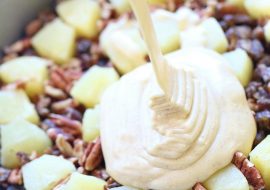
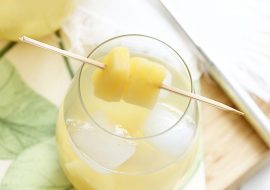
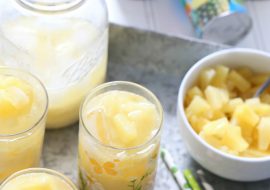



Write a Comment